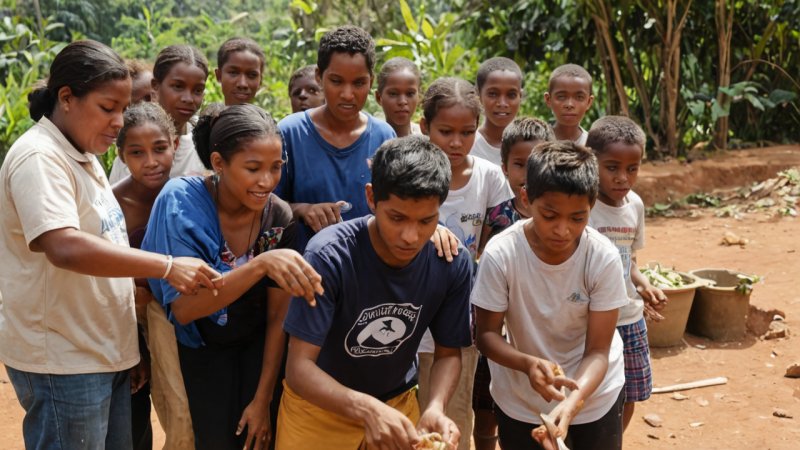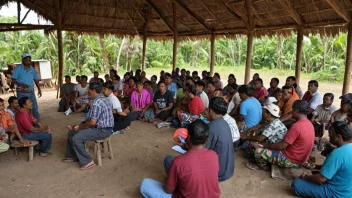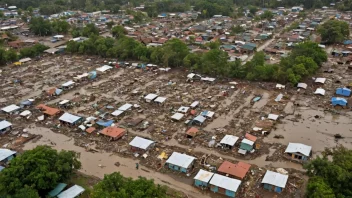International aid plays a critical role in the fight against poverty, acting as a lifeline for millions of individuals and communities around the world. As we navigate an increasingly interconnected global landscape, the significance of international aid continues to grow, addressing not only immediate needs but also fostering long-term development. This article will explore the multifaceted dimensions of international aid, its impact on poverty alleviation, and how individuals can engage in efforts to support this vital cause.
Understanding International Aid
International aid encompasses a variety of financial, technical, and material support provided by governments, non-governmental organizations (NGOs), and international institutions to developing countries. The primary goal of this aid is to alleviate poverty, promote economic development, and enhance the quality of life for vulnerable populations. Aid can take many forms, including humanitarian assistance during crises, development aid aimed at building infrastructure and institutions, and technical assistance that promotes education and training.
The Different Types of International Aid
International aid can be categorized into several types, each serving distinct purposes and addressing various aspects of poverty:
- Humanitarian Aid: This type of aid is often provided in response to emergencies, such as natural disasters, conflicts, or health crises. Humanitarian aid focuses on delivering immediate assistance, including food, water, shelter, and medical care, to those affected.
- Development Aid: Unlike humanitarian aid, development aid is aimed at fostering long-term growth and stability in a country. This may include funding for education, healthcare, infrastructure projects, and economic development initiatives.
- Technical Assistance: This form of aid involves the transfer of knowledge and skills to help communities build their capacities. Technical assistance often includes training programs, workshops, and the sharing of best practices.
- Bilateral and Multilateral Aid: Bilateral aid refers to assistance provided directly from one government to another, while multilateral aid involves multiple countries or organizations coming together to fund projects through international institutions like the United Nations or World Bank.
The Impact of International Aid on Poverty Reduction
The impact of international aid on poverty reduction is profound and multifaceted. Here are some key areas where aid has made a difference:
Health and Wellbeing
International aid has significantly contributed to improving health outcomes in impoverished regions. Initiatives funded by international aid have expanded access to essential healthcare services, vaccines, and medications. For example, programs aimed at combating diseases such as malaria, tuberculosis, and HIV/AIDS have saved countless lives and improved overall community health.
Education and Literacy
Education is a cornerstone of poverty alleviation, and international aid has played a pivotal role in increasing access to quality education. Scholarships, teacher training, and school infrastructure projects funded by international organizations have helped millions of children attend school, thus breaking the cycle of poverty. Efforts to promote literacy among adults have also empowered individuals to improve their economic prospects.
Economic Development
International aid has been instrumental in fostering economic development by supporting small businesses, agricultural projects, and infrastructure improvements. By providing financial resources and technical expertise, international aid helps communities create sustainable livelihoods, reducing dependence on external assistance over time.
Disaster Relief
In times of crisis, international aid is crucial for providing immediate relief and support. Aid organizations mobilize quickly to deliver food, clean water, medical care, and shelter to affected populations. This swift response can save lives and facilitate recovery efforts, enabling communities to rebuild and restore their lives.
Challenges and Criticisms of International Aid
While international aid has had a significant positive impact, it is not without its challenges and criticisms. Some argue that aid can create dependency, leading to a lack of self-sufficiency in recipient countries. Others point out issues of mismanagement, corruption, and inefficiencies in aid distribution. Additionally, there is a growing call for aid organizations to focus on empowering local communities and fostering sustainable solutions rather than merely providing temporary relief.
How Individuals Can Get Involved
Individuals can play a crucial role in supporting international aid efforts and contributing to poverty alleviation. Here are some ways to get involved:
- Volunteer: Many NGOs and organizations rely on volunteers to help with various projects. By offering your time and skills, you can make a tangible difference in your community or abroad.
- Educate Yourself and Others: Understanding the complexities of poverty and international aid is essential. Share your knowledge with your community to raise awareness about global issues and inspire action.
- Advocate for Change: Engage with policymakers and advocate for effective and sustainable international aid policies. Your voice can help influence decisions that impact poverty reduction efforts.
- Support Local Initiatives: Look for local organizations that work on poverty alleviation and community development. Supporting these initiatives can create a ripple effect of positive change.
Conclusion
International aid is a powerful tool in the fight against poverty, providing essential support to individuals and communities in need. While challenges exist, the positive impact of aid on health, education, and economic development cannot be overstated. By understanding the role of international aid and taking action in our communities, we can contribute to a more just and equitable world. Together, we can make a difference and help lift millions out of poverty.






